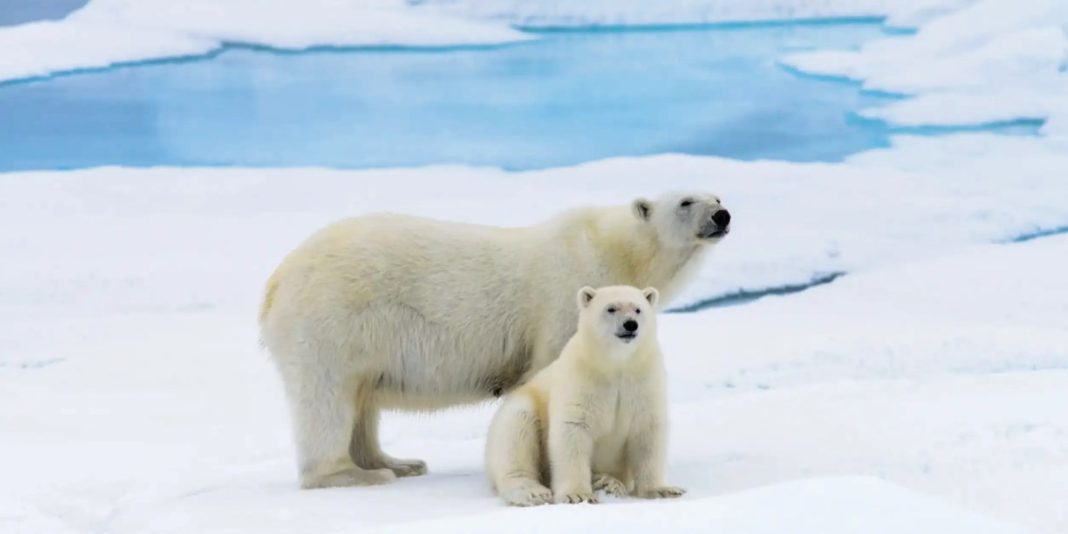From Polar Bear Science
Susan Crockford
We are just into the 2024 sea ice melt season in the Arctic with no signs of any big, dramatic changes despite claims that 2023 was the warmest year on record (since 1850). There is still abundant sea ice habitat for polar bears ahead of the summer months (July-September) when Arctic ice melts back considerably.
Polar bears in Western Hudson Bay are still on the ice despite vast open water levels normally signaling “breakup” has happened: the wind-driven ice is packed tight against the western shore and the bears are still on it.
Arctic sea ice overview
In 2024, sea ice extent at 21 June was estimated at 10.5 mkm2:

Compare the above to 2022 (below), when it wasn’t the “hottest year on record,” and ice extent was 10.4 mkm2:

Canada
Despite an early-summer “heat wave” in Eastern North America there is still abundant sea ice:

As I discussed earlier this month, the enormous area of open water in eastern Hudson Bay was caused by winds, not ice melt. This has caused the region to have the lowest ice coverage since 1979 for this time of year (see graph below):

The ice is not showing up on the satellite images as thick as it has been in past years, as the chart below shows: usually ice thickness is showing as dark green at this time of year (first year ice >1.2m thick). However, this may be an artifact: wind-driven ice is almost always buckled and compressed into a thick mass, so the ice that’s left in Western Hudson Bay may be much thicker than it looks (and therefore, slower to melt over the summer):

But according to University of Alberta researchers, polar bears tagged earlier are all still on the ice and there have been no reports from Churchill of polar bears onshore. As far as I am aware, there have been no reports of problem bears ashore in NW Hudson Bay, like Arviat, where bears often come ashore earlier than further south.

Many bears seen earlier in the season were said to have been in good condition (see below, courtesy Andrew Derocher, 24 April 2024), suggesting a successful spring feeding bonanza, it’s likely they are waiting around until the ice literally rotting under their feet forces them ashore.

Barents Sea
Ice is receding from the Svalbard area but there is still plenty of polar bear habitat to the north and around Franz Josef Land to the east, where most “Barents Sea” polar bears make maternity dens and spend the summer:

Related


